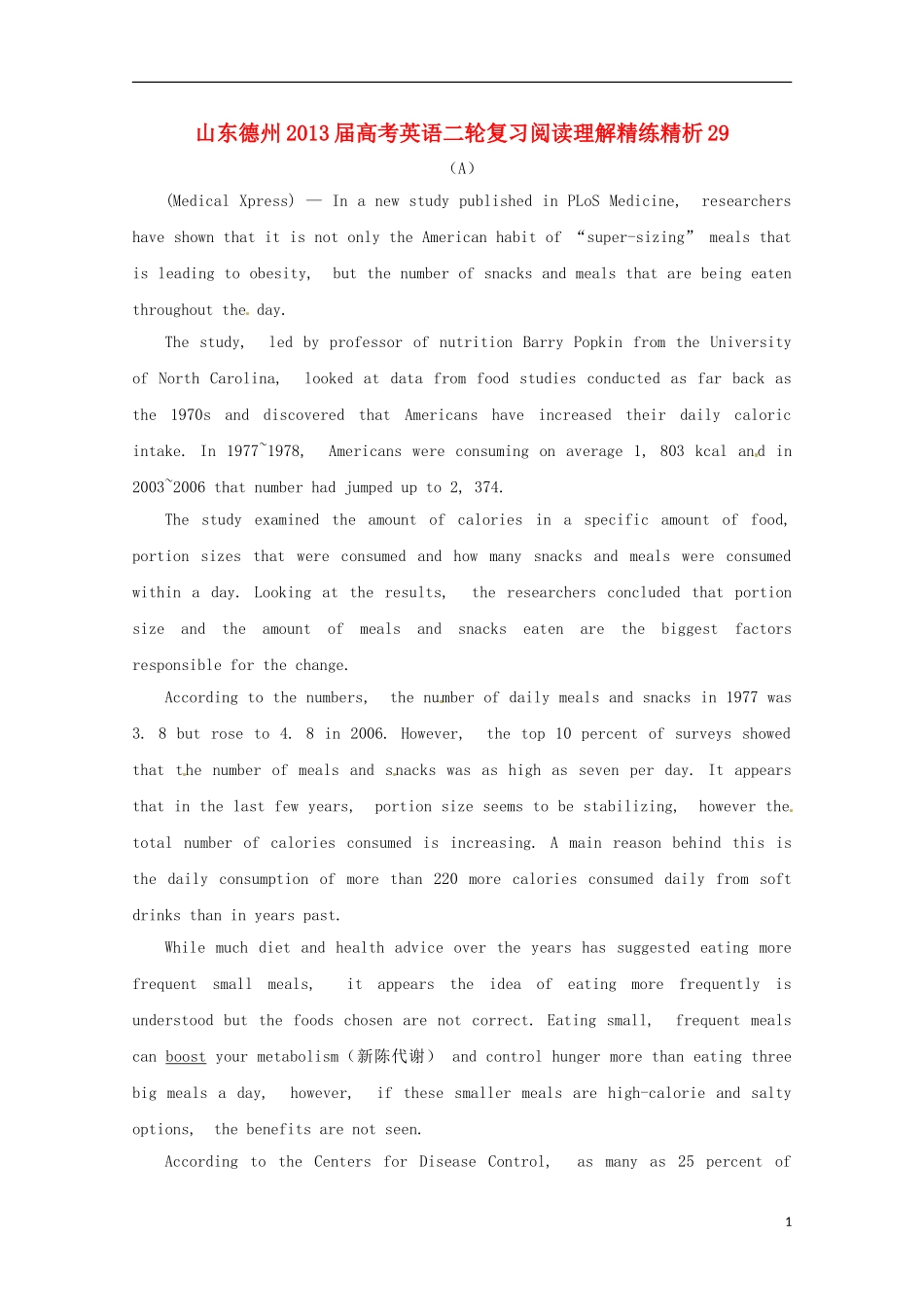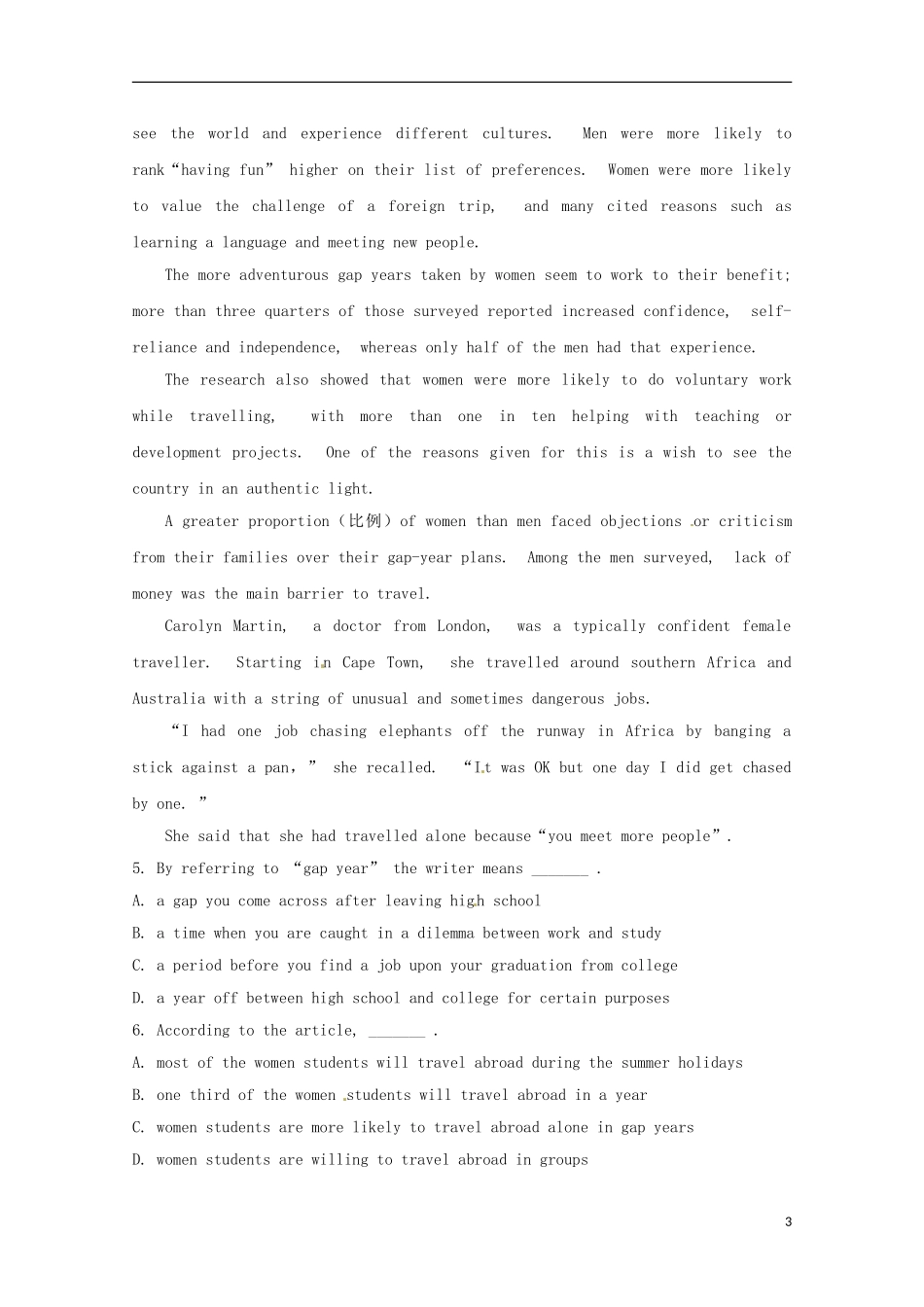山东德州 2013 届高考英语二轮复习阅读理解精练精析 29(A)(Medical Xpress) — In a new study published in PLoS Medicine, researchers have shown that it is not only the American habit of “super-sizing” meals that is leading to obesity, but the number of snacks and meals that are being eaten throughout the day. The study, led by professor of nutrition Barry Popkin from the University of North Carolina, looked at data from food studies conducted as far back as the 1970s and discovered that Americans have increased their daily caloric intake. In 1977~1978, Americans were consuming on average 1, 803 kcal an d in 2003~2006 that number had jumped up to 2, 374. The study examined the amount of calories in a specific amount of food, portion sizes that were consumed and how many snacks and meals were consumed within a day. Looking at the results, the researchers concluded that portion size and the amount of meals and snacks eaten are the biggest factors responsible for the change. According to the numbers, the number of daily meals and snacks in 1977 was 3. 8 but rose to 4. 8 in 2006. However, the top 10 percent of surveys showed that the number of meals and s nacks was as high as seven per day. It appears that in the last few years, portion size seems to be stabilizing, however the total number of calories consumed is increasing. A main reason behind this is the daily consumption of more than 220 more calories consumed daily from soft drinks than in years past. While much diet and health advice over the years has suggested eating more frequent small meals, it appears the idea of eating more frequently is understood but the foods chosen are not correct. Eating small, frequent meals can...


